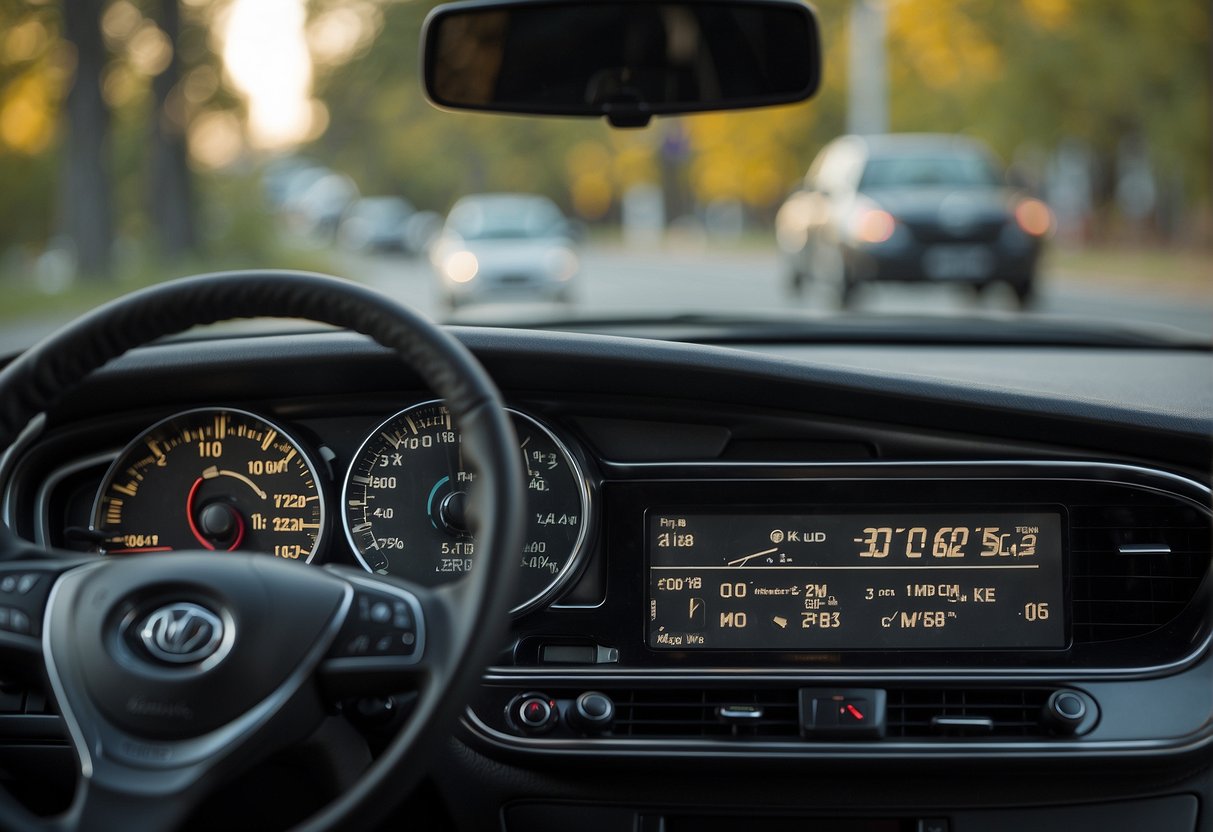A trip odometer is a useful feature found alongside the main odometer on a vehicle’s dashboard. It provides additional information to the driver by tracking the distance covered during individual trips.
Unlike the main odometer, which logs the total mileage the vehicle has accumulated over its lifetime, a trip odometer can be reset. This allows drivers to measure the distance of specific journeys, monitor fuel consumption for precise distances, or gauge travel time for regular routes without affecting the permanent record of total miles traveled by the vehicle.

We can reset the trip odometer before starting a new journey to ensure accurate distance tracking for that particular trip.
Many modern vehicles come with digital odometers, which include one or more trip meters providing an easy-to-read display.
The advantage of having this information readily available helps us manage our driving patterns, plan for maintenance, and keep tabs on vehicle performance.
It’s a straightforward yet indispensable tool that complements the comprehensive data offered by the vehicle’s dashboard.
JUMP TO TOPIC
Trip Odometer: A Detailed Dive
Odometers have been central to how we understand vehicle usage. They track the total distance a vehicle has traveled, transitioning from mechanical gears to crisp digital displays.
Evolution from Mechanical to Digital
Initially, odometers were mechanical devices, consisting of a series of gears connected to the vehicle’s transmission. As the car moved, the rotation of the wheels turned the gears, advancing the odometer’s display to reflect the distance traveled.
Their durability meant they could last the lifetime of the vehicle, but they were not without drawbacks. Precise calibration was essential to ensure accuracy, and physical wear could eventually lead to inaccuracy or failure.
In recent years, digital odometers have largely replaced mechanical ones. They work by receiving electronic signals from a sensor, usually located in the vehicle’s transmission.
These signals are then processed by the vehicle’s computer system to display the traveled distance on the digital screen.
Digital odometers offer more than just a readout of total distance; their integration with the vehicle’s electronic systems allows for additional features like trip meters and maintenance reminders.
How Odometers Measure Distance
This distance is known as the tire’s circumference, and by counting each revolution, odometers can determine how far the car has gone.
For a more comprehensive look, here’s an overview:
| Component | Function | Result |
| Wheel Rotation | Turns mechanical or signals digital sensor | Measurement of distance |
| Sensor (Digital) | Sends electronic pulses | Calculates and displays distance |
A trip odometer, specifically, allows us to measure the distance for individual journeys. Located within the instrument cluster, it operates similarly to the main odometer but can be reset to zero, providing separate tracking for the distance of specific trips.
This function is valuable for mileage tracking for business travel, monitoring fuel efficiency, or even just noting the length of a road trip.
A speedometer, by contrast, informs us how fast the vehicle is moving at any given moment, which, although related to distance measurement, serves a separate role in the vehicle’s suite of instrumentation.
The Role of Odometers in Vehicle Maintenance
Odometers serve as vital tools for monitoring vehicle health and scheduling maintenance. They provide essential data that allow us to keep our vehicles running efficiently.
Tracking Mileage for Service Intervals
- Engine Oil: Replace approximately every 5,000 miles
- Air Filter: Replace around 15,000 to 30,000 miles
- Transmission Fluid: Change every 30,000 to 60,000 miles
Fuel Economy and Efficiency
| Maintenance | Impact on Fuel Economy |
| Regular Oil Changes | Ensures efficient engine operation |
| Air Filter | Improves airflow to engine |
| Tire Pressure | Reduces rolling resistance |
Fuel economy can be optimized through diligent maintenance, using the trip odometer to monitor fuel use between fill-ups.
This helps us assess the vehicle’s fuel efficiency and detect potential issues, which is especially important for the engine and transmission systems.
Accurate readings enable targeted improvements in driving habits or prompt service checks to prevent inefficiencies.
Detecting and Preventing Odometer Fraud
In our experience, preventing odometer fraud begins with awareness and understanding of the common tampering methods. The knowledge of legal protections further adds to a consumer’s defense against this crime.
Common Methods of Odometer Tampering
Odometer fraud is a deceptive act aimed to increase a used car’s resale value by reducing the mileage displayed. Tampering often involves disconnection, resetting, or alteration of the odometer.
Physical Tampering: Manual rolling back of miles on older odometers.
Electronic Tampering: Using sophisticated software to reprogram digital odometers.
Vehicle Data Interference: Altering mileage data in vehicle control units.
To combat these illegal practices, we suggest the following preventative measures:
- Service Records Analysis: Cross-reference the odometer reading with historical service data.
- Wear and Tear Inspection: Physical signs of use may not match with the reported mileage.
- Diagnostic Tools: Use electronic diagnostics to fetch original mileage data from the vehicle’s computer.
Legal Implications and Consumer Protection
Odometer tampering is illegal and violators may face substantial penalties, including fines and imprisonment.
Consumers should be aware that:
We need to ensure that consumers are aware of their rights and the steps taken to seek retribution.
Reporting suspected fraud to agencies like the National Highway Traffic Safety Administration (NHTSA) is crucial.
Regulations at both federal and state levels are in place as a safety net for those impacted by this crime.
Also, professional inspections by certified mechanics can provide an additional layer of protection during the used car buying process.
- How to Fix Car AC Not Cooling Properly - November 22, 2025
- How to Check Wheel Alignment at Home (Simple DIY Guide) - November 22, 2025
- Why Headlights Turn Yellow and How To Prevent It - November 4, 2025